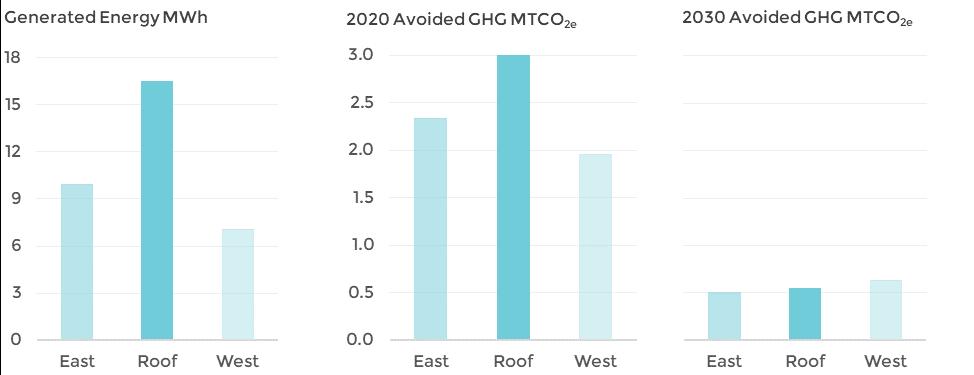
1 minute read
It’s About Time
Given that grid emissions have a temporal component to them, the focus needs to be on strategies that offer energy savings during specific hours of high grid emissions intensity.
These strategies can take the form of efficiency measures, generation, or load-shifting measures that displace the time of peak building energy demand. For instance, a thermally massive building envelope can flatten the demand curve and shift as well as reduce the peak; on-site renewable generation systems can be optimized for peak generation during hours of high availability; and a loadshifting strategy such as thermal or electrical battery can draw more power from the grid during hours of low grid emissions intensity and dispatch to offset the project demand during hours of high emissions intensity. To illustrate the magnitude of GHG avoidance that can be achieved just by optimizing the hours of grid energy draw, Figure 2 presents the energy generation as well as GHG avoidance potential of three identical photovoltaic systems installed at different orientations.
The analysis considers hourly marginal GHG emission factors in combination with hourly energy generated to calculate annual total GHG avoidance.
Even in the present scenario, a west facing kW of PV with peak generation in the late afternoon hours avoids more GHG than an east facing kW, although its net generated energy is lower. This gets especially pronounced in the 2030 scenario when the west kW avoids GHG emissions more than the roof kW, even when it only generates less than half of the energy. As the future grid gets cleaner and the daytime marginal emissions approach zero in 2030, the significance of on-site renewable energy generation during the same daytime hours will drop considerably. In this future scenario, it will become increasingly important to combine on-site renewable generation with load shifting strategies that charge during hours of low grid emissions, and then dispatch to offset grid draw during hours of the highest grid emissions. Without careful planning, even large magnitudes of on-site renewable generation could offer only minimal GHG emissions avoidance.
As the grid gets cleaner, Net-Zero-Energy will be far from Net-Zero-Carbon.
Figure 2:
Energy generation and GHG avoidance potential of three identical photovoltaic system capacities facing different orientations for present and future scenarios. Energy offset in the late afternoon hours offers significantly higher GHG avoidance, especially pronounced in the future.








